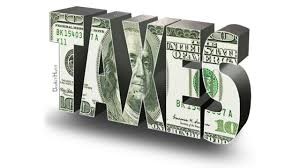 In recent years, the $500,000 limit and some other favorable aspects of the election have been extended for a year or two at a time, but sometimes these provisions weren’t extended until December, leaving many taxpayers uncertain for most of a tax year as to whether the higher expensing limit and other favorable provisions would be extended. What’s worse, the $500,000 limit and other favorable provisions expired again at the end of 2014. Most dramatically, on Jan. 1, 2015, the limit reverted to its old level of $25,000 and the other favorable provisions also lapsed, once again plunging taxpayers into uncertainty.
In recent years, the $500,000 limit and some other favorable aspects of the election have been extended for a year or two at a time, but sometimes these provisions weren’t extended until December, leaving many taxpayers uncertain for most of a tax year as to whether the higher expensing limit and other favorable provisions would be extended. What’s worse, the $500,000 limit and other favorable provisions expired again at the end of 2014. Most dramatically, on Jan. 1, 2015, the limit reverted to its old level of $25,000 and the other favorable provisions also lapsed, once again plunging taxpayers into uncertainty.
The recently enacted “Protecting Americans from Tax Hikes Act of 2015” (i.e., the 2015 PATH Act) makes permanent the $500,000 Section 179 expensing limit, thus enabling a small business to elect to expense up to $500,000 of investment in new equipment and other qualifying property instead of having to depreciate the cost over a number of years.
To provide a bit more detail, the new law, retroactive so as to not leave out tax years beginning in calendar year 2015:
- makes permanent the expensing of up to $500,000 annually of the cost of qualifying property; as was true for earlier years for which the $500,000 limit was in place, the amount of expensing allowed is subject to gradual reduction (down to zero) once the total qualifying property placed in service during the year exceeds $2 million;
- makes permanent the eligibility for expensing of most computer software;
- makes permanent the eligibility for expensing of qualified real property (certain leasehold building improvements, retail building improvements and restaurant property); and
- makes permanent the ability to revoke an election, or change its specifics, without IRS consent.
And, for tax years beginning after calendar year 2015 (post-2016 years), the new law:
- indexes both the $500,000 and $2 million limits for inflation;
- ends the exclusion from expensing of air conditioning and heating units; and
- removes the $250,000 cap on qualified real property expensing; the capped expensing nevertheless also had to be applied against the $500,000 limit.
The PATH Act also extends and modifies the rules pertaining to bonus depreciation. The applicable bonus depreciation percentage will be 50% for property placed in service during 2015, 2016 and 2017. The applicable bonus depreciation percentage will be 40% for property placed in service in 2018, and 30% for property placed in service in 2019. The PATH Act also continues to allow taxpayers to accelerate alternative minimum tax credits rather than use bonus depreciation. For the 2016 taxable year, the PATH Act modifies the rules relating to the use of alternative minimum tax credits in lieu of bonus depreciation by increasing the amount of unused tax credits that can be claimed instead of bonus depreciation.
The Act has numerous other individual and business tax provisions. L&C’s tax professionals routinely provide tax advice to individuals and businesses. If you would like more details about these changes or any other aspect of the new law, please do not hesitate to contact our office.


